The Last Bergs (Written on Jan 18, 2014)
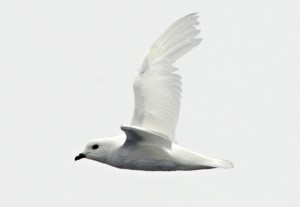
The only all white petrel, the Snow Petrel is usually confined to the pack-ice and nearby sea.
Photo credit M. Jenner
The midnight glow was slightly darker than all the previous Antarctic ‘nights’, but it was still remarkably light. Just when I thought the 5 bergs on the RADAR would be the last ones and I was feeling slightly glum – two more appeared 13 nm away. Yes, we were still in iceberg country and wow, this is the best visibility we have had for a few weeks! Through a slice in the heavy cloud a one-day wanning full-moon, shone on the water creating a silver patch. Lets’ see, the moon over an iceberg – that would make a great shot! Adjusting 2 degrees to avoid the berg, I hoped the moon would reappear just as we passed the berg. Sadly, the cloud prevailed, but still more berg photos were taken, to add to the other zil! They are all different and all special – I rationalised, as the megabyte tally grows!
We have turned to the north to dodge a constant series of lows that are eastward moving, the usual direction of weather systems in the Southern Ocean. Travelling in relation to the ice edge from advice from Neal Young at the AAD/UTas and from Bill Plant and Tina Donaldson at the BOM/Antforecasters, Curt has been able to understand the weather patterns, make informed decisions and plan ahead, while at sea. And now, timing our take-off and passage heading northwards using these forecasts, excellent knowledge and modelling has been absolutely invaluable. We appreciate Chris Henderson’s introduction to both Neal and Bill – many, many heartfelt thanks.
The sea is calm now with only 4-6 knots from the N, but what awaits us? Whale Song will continue to protect and keep us safe in this game of dodgems…
We have just visited East Antarctica which is the most isolated part of Antarctica. Shipboard travel for re-supplying bases in this area requires long voyages and as well, only one or two tourist vessels a year traverse this coast. Visitors whom make it to Casey are warmly received. Due to the isolation, east Antarctica is sometimes nicknamed the ‘far side’ of Antarctica. Only a few stations are scattered along this mostly icebound coast, Dumont D’Urville (French) known as ‘Du-d’U’ (doo-doo), Casey (Australia), Mimyy Observatory (Russia) and Davis (Australia). In 1904, the US Antarctic historian Edwin Swift Balch named this region East Antarctica, since most of it lies in the eastern hemisphere.
We conducted shipboard surveys for cetaceans and thus followed the ice edge or just beyond, not approaching the coast at all. It was surprising to experience how far offshore the ice edge extended in this region. Our track-line on the navigation chart is fascinating, considering where we travelled in relation to the coast. East Antarctica is characterised by its’ difference to the Antarctic Peninsula (referred to as the ‘Banana Belt’) , as it has much colder temperatures, massive tabular icebergs, huge colonies of emperor penguins, enormous congregations of seabirds and thousands of kilometres of icebound coastline.
Noon Observations Jan 18, 2014
Lat/Long: 600 50.2 S 1160 47.5 E
Dry Bulb Temp: 4.00C
Wet Bulb Temp: 1.30C
SST (Sea Surface Temp): 1.30C
COG (Course Over the Ground): 0090
SOG (Speed Over the Ground): 8.3 knots
Barometer: 981 Hp
Beaufort SS (Sea State): 3-4
WS (Wind Speed): 10-13 knots
WD (Wind Direction): NNE
Swell: N 2.5 m
Wildlife: 1 Minke whale
WT: KESG – 8
Antarctic Fact: The coldest temperature recorded on Earth was at -89.60C in July 1983 at the Russian Vostok Research Station in inland East Antarctica. This record has been surpassed with a recording in Oct 2010 of -93.00C at the same station.
Antarctic Slang: Vostochniki – those whom winter at Vostok are respected throughout the Antarctic community for their ability to withstand not only the extraterrestrial cold, but also the lack of many comforts at the spartan station.
Resty produced another wonderful lunch for the hungry troops. Hot steaming bowls of oodles-of-noodles with sausages and vegies went down well and the yummy smell of Tas’s chocolate and peanut butter squares cooking drove us crazy most of the afternoon!
Turning for home at 630 56.6 S 1150 42.5 E we were 3 degrees of longitude, or 180 nm to the east of Casey Station, one of the three Australian research bases. This station, originally named US Base Wilkes was given by the US to Australia in 1959, but due to drifting snow the base was rebuilt and completed in 1988. The station was renamed Casey after Lord Richard Casey, the Minister for Foreign Affairs, whom had been instrumental in the 50’s and 60’s in campaigning for Australia’s increased role in the opening up of the continent. A unique architectural style aimed to cope with the strong winds and an innovative design was created, consisting of a long building raised three metres above the rock on a scaffolding base. Aligned across the direction of the prevailing wind, the snow could continue to pass unhindered beneath the structure. The buildings’ leading edge was curved for its’ entire length presenting an aerodynamic shape which assisted with wind flow. Elevated on hundreds of steel legs the long building resembles a giant caterpillar. The long corrugated-iron tunnel makes such a racket in the wind, that the residents, known as ‘tunnel-rats’ sometimes find it hard to sleep during calm periods!
The Antarctic holds many secrets. From some of the known stories, the highs and lows of success and failure are extreme. There is no middle ground here. Can you imagine Scott’s disappointment in 1911 at reaching the South Pole, only to find the Norwegian flag flying, planted some 35 days previously? He wrote:
Great God! This is an awful place and terrible enough for us to have laboured to it without the reward of priority.
However, the reward was not so pleasurable for the apparent winner. Roald Amundsen was set on the achieving recognition in the Northern Hemisphere, rather than in the southern. This was his reaction:
I cannot say that the object of my life was obtained… I have never known a man to be placed in such a diametrically opposite position to the goal of his desires at that moment. The regions around the North Pole had attracted me since childhood and here I was at the South Pole. Can anything more topsy-turvy be imagined?
The man who didn’t win was disappointed but also the man who did win… Dang. Can you imagine the disappointment of Mawson when he staggered to the base in Commonwealth Bay after losing team members Ninnis down a crevasse and Mertz perishing of Vitamin A poisoning? An excerpt from The Home of the Blizzard outlines his thoughts:
Then the rocks around Winter Quarters began to come into view, part of the basin of the Boat Harbour appeared, and lo! there were human figures! They almost seemed unreal-I was in a dream-but after a brief moment one of them saw me and waved an arm. …Minutes passed, and slowly I went along with the sledge. Then a head rose over the brow of the hill and there was Bickerton, breathless after a long run. I expect he considered for a while which one of us it was. Soon we had shaken hands and he knew all in a few brief words, and I learned that the Ship had left earlier that day.
Mawson had to wait with the six men at the base at Commonwealth Bay for another year to be retrieved from the ice… These guys were tough, they are my heroes.
With our own expedition, we are disappointed that we have not found blue whales as yet, but the taste of success with the humpback whale tags (5 satellite tags and 1 Whale Lander tag deployed) has to outweigh this negative emotion. Blue whales could well have been deep inside a bay that we wanted to visit but had to pass, without entry. The safety of the ship and team, could well have been compromised, should we had dallied there. We have appreciated the excellent daily advice of Neal, Bill and Tina regarding the ice and weather scenarios for this trip. Safety First always had to be the motto. Getting here, finding whales and just generally keeping the ship functioning in such a remote location in cold water, is an achievement in itself. The water maker protests, the fuel becomes sludgy and the vessel must be coaxed gently with such temperature changes. Curt and I are thrilled, beyond words, to have had the chance and the challenge of such adventure and scientific endeavour. The fire is still there and will not be quenched. We are on a mission and will complete this mission – for the whales.
The last iceberg was recorded in the ships’ log at 600 06 South at 1700. From a distance, in the sunshine (what is this thing?) this berg really looked like a house piece in Monopoly! ‘Iceberg Street’ would get my purchase!
The scrummy smells of Resty’s roast chicken, green beans with garlic, couscous and steamed rice and fresh Greek salad and baguette with camembert cheese delighted all. For dessert, Tas’s peanut butter squares with scoops of vanilla ice cream DID NOT disappoint! Thank you! How good could life get? The sun is out and we are squinting as the sun blazes in the windows at the dinner table – this is funny thing! We haven’t seen the sun for about a week, it hurts your eyes!
At 1830 we crossed the Latitude of 60 South and are headed into the Screaming Fifties. For now it is gorgeous, we shall see by my watch tonight! A Minke whale, the only cetacean sighting for the day, surging towards the boat is seen just after dinner by Curt, as two surfacing splashes on a deep blue, white cap-less sea.
Just above 60 South and there is still an iceberg on the horizon slightly abaft the beam! Yahoo!
Mich

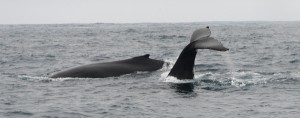
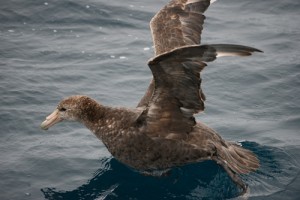



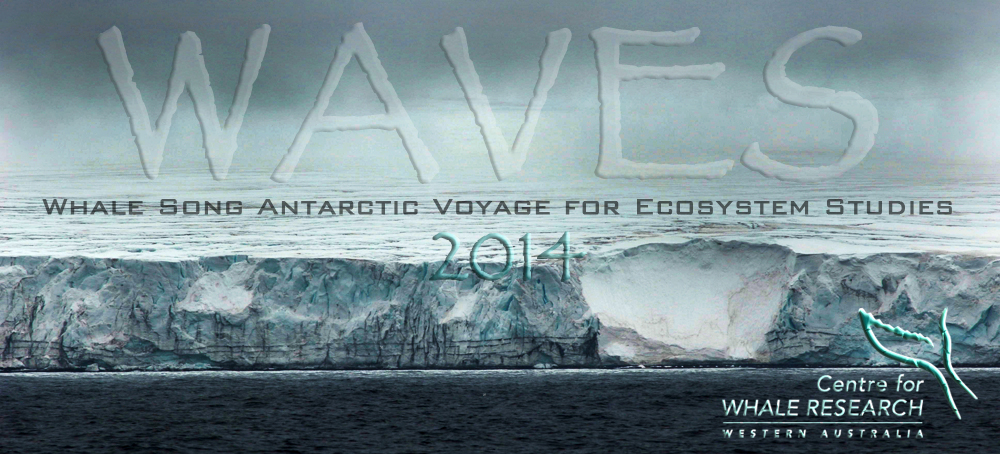










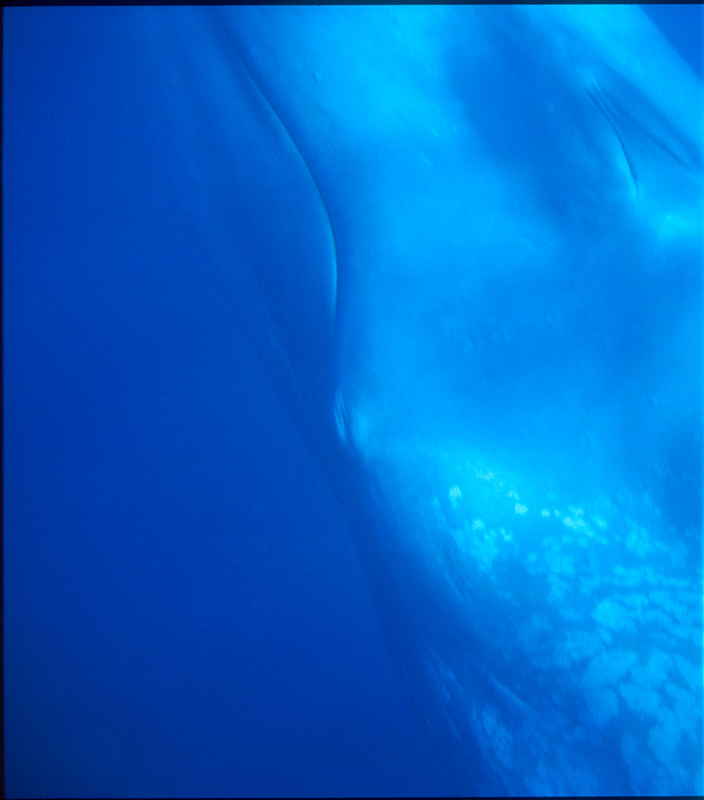
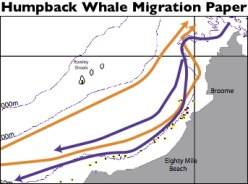
No comments yet.